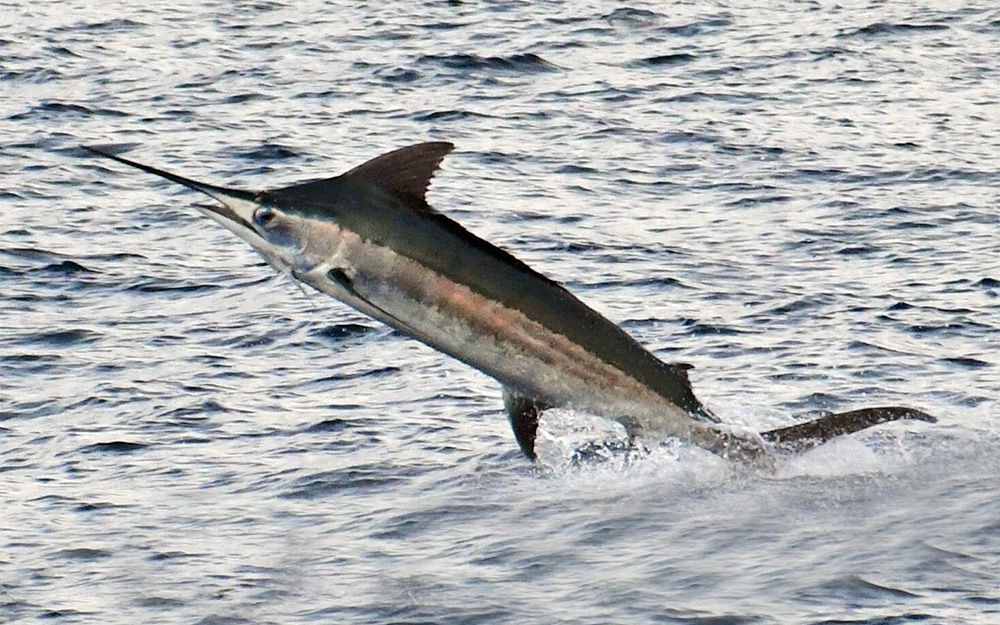Blue marlin
(Makaira nigricans)

Classification
General data
The Atlantic blue marlin (Makaira nigricans) and the Indo-Pacific blue marlin (Makaira mazara) was two separate species, but the scientists decided that they both should considered as one species simply called blue marlin. Some authorities still consider both species distinct.
The blue marlin feeds on a wide variety of organisms near the surface. It uses its bill to stun, injure, or kill while knifing through a school of fish or other prey, then returns to eat the injured or stunned fish. Marlin is a popular game fish. The relatively high fat content of its meat makes it commercially valuable in certain markets. It is the national fish of the Commonwealth of The Bahamas and is featured on its coat of arms.
A bluewater fish that spends the majority of its life in the open sea far from land, the blue marlin preys on a wide variety of marine organisms, mostly near the surface, often using its bill to stun or injure its prey. Females can grow up to four times the weight of males. The maximum published weight is 818 kg (1,803 lb) and length 5 m (16.4 ft). Greater lengths have been claimed unofficially.
Adult blue marlin have few predators apart from killer whales, sharks (Shortfin Mako and Great Whites), and humans.











